UPSC Daily Current Affairs: 25 July 2024 | Current Affairs & Hindu Analysis: Daily, Weekly & Monthly PDF Download
GS3/Environment
Gandhi Sagar Sanctuary
Source: The Hindu
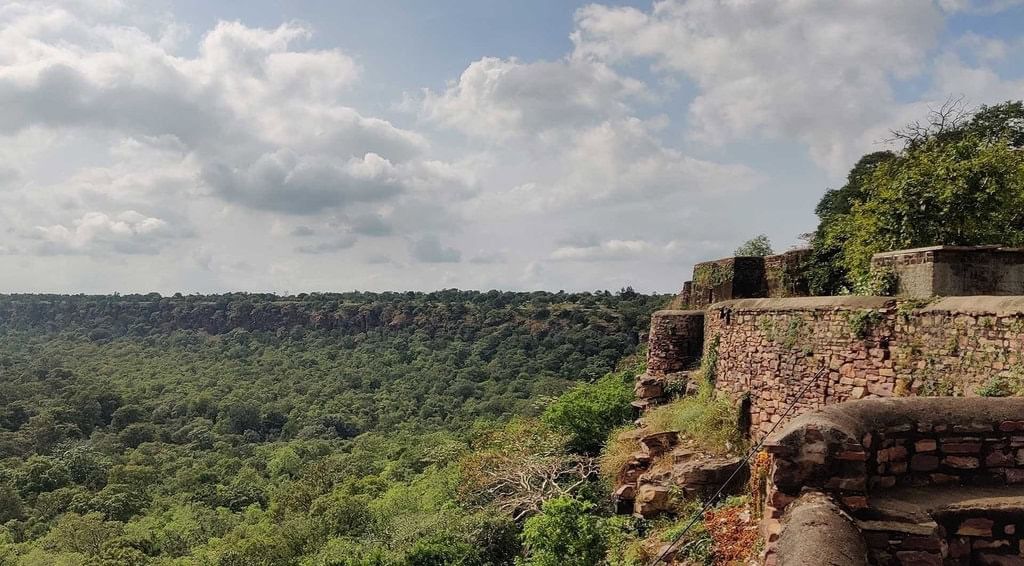 Why in news?
Why in news?
The Gandhi Sagar sanctuary in Madhya Pradesh is the chosen site for the upcoming cheetah relocation initiative. Additionally, preparations are being made in Banni, located in the Rann of Kutch, Gujarat, to accommodate some of these cheetahs.
Cheetah Reintroduction in India
- In India, cheetahs vanished in the early 1950s due to hunting and habitat loss.
- The 'Action Plan for Reintroduction of Cheetah in India/Project Cheetah (2022)' aims to bring cheetahs from African countries to various national parks.
- Spearheaded by the National Tiger Conservation Authority (NTCA), this initiative recently reintroduced cheetahs from Namibia to Kuno National Park in Madhya Pradesh.
- Cheetahs are classified as VULNERABLE by the IUCN and under Schedule II of the Wild Life (Protection) Act, 1972.
- Kuno National Park and Gandhi Sagar provide an ideal habitat akin to Maasai Mara in Kenya, suitable for cheetahs.
About Gandhi Sagar Wildlife Sanctuary
Located in western India, covering an area of 368.62 sq km, Gandhi Sagar Wildlife Sanctuary features a flat rocky plateau with shallow topsoil divided by the Chambal River. It includes the Gandhi Sagar dam and reservoir within its boundaries.
- Flora: The sanctuary boasts a savannah ecosystem with open grasslands and dry deciduous trees. Riverine valleys support evergreen vegetation.
- Fauna: The sanctuary is home to a diverse array of wildlife including leopards, sloth bears, striped hyenas, grey wolves, golden jackals, jungle cats, Indian foxes, and marsh crocodiles.
About Banni Grasslands
Situated in the Kutch district of Gujarat, the Banni Grassland spans around 3,847 square km. The region experiences arid to semi-arid climates with extremely hot summers and mild winters, receiving 300-400 mm of annual rainfall predominantly during the monsoon season.
- Flora and Fauna: The grassland supports grasses like Dichanthium, Sporobolus, Cenchrus species, along with salt-tolerant plants, shrubs, and trees such as Acacia and the invasive Prosopis juliflora. The area is home to various wildlife including the Indian wolf, hyena, chinkara, Great Indian Bustard, flamingos, raptors, reptiles, and invertebrates.
- Human Habitation: Inhabited by pastoral communities like the Maldharis, who rely on livestock grazing for their livelihood, the region has limited agricultural activities due to its arid conditions, with some areas utilized for salt production.
GS3/Economy
India AI Mission
Source: Indian Express
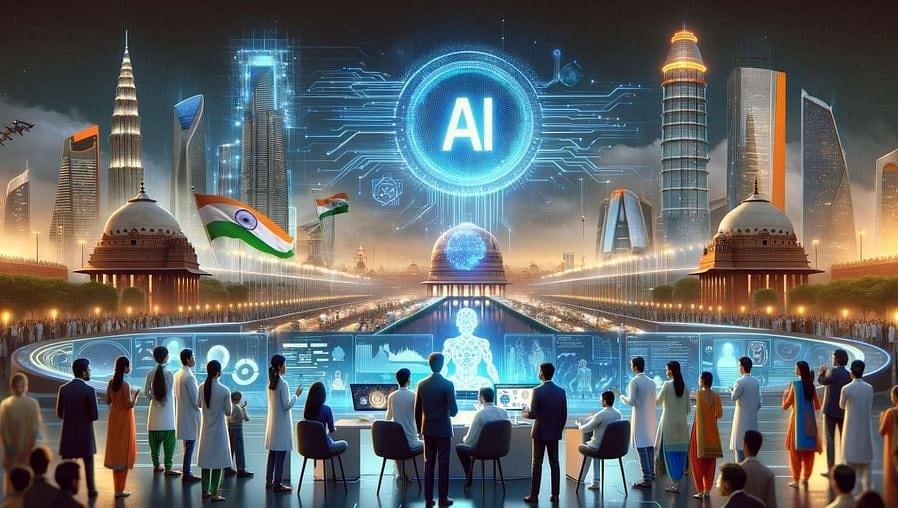
Why in News?
In the Union Budget 2024, the Ministry of Electronics and IT has been allocated Rs 551 crore for the IndiaAI Mission for 2024-25.
IndiaAI Mission
About IndiaAI Mission (Objective, Key Pillars of the Mission, Global AI Summit, etc.)
About IndiaAI Mission:
- The IndiaAI Mission is an initiative by the Government of India to leverage AI for economic growth, governance enhancement, and improving citizens' quality of life.
- Its goal is to establish India as a global leader in AI innovation and adoption.
Key Pillars of IndiaAI Mission:
- IndiaAI Compute Capacity:
- Creation of a scalable AI computing ecosystem with 10,000 GPUs through public-private partnerships.
- Introduction of an AI marketplace offering AI services and pre-trained models.
- IndiaAI Innovation Centre:
- Focusing on developing and deploying indigenous large multimodal models and domain-specific foundational models.
- Customizing models to meet the needs of diverse Indian industries.
- IndiaAI Datasets Platform:
- Facilitating access to high-quality non-personal datasets for AI innovation.
- Providing a unified data platform for Indian startups and researchers.
- IndiaAI Application Development Initiative:
- Promoting AI applications in critical sectors by addressing problem statements from various governmental bodies.
- Focus on developing impactful AI solutions for socio-economic transformation.
- IndiaAI Future Skills:
- Increasing AI education accessibility through more courses at different academic levels.
- Establishing Data and AI Labs in Tier 2 and 3 cities to nurture skilled AI professionals.
- IndiaAI Startup Financing:
- Supporting deep-tech AI startups with streamlined funding access.
- Nurturing a vibrant ecosystem of AI startups for technological advancements and economic growth.
- Safe & Trusted AI:
- Promoting responsible AI development through various measures.
- Implementing guidelines for ethical, transparent, and trustworthy AI technologies.
Global IndiaAI Summit 2024:
- The Global IndiaAI Summit in July 2024 aimed to foster collaboration and knowledge exchange in AI technologies.
- It provided a platform for international AI experts to discuss key AI issues and challenges.
IndiaAI Mission and Budget 2024:
- The IT Ministry plans to procure 300 to 500 GPUs to enhance domestic computing capacity for AI system development.
- The budget for the IndiaAI Mission in the Union Budget 2024-25 is Rs 551 crore.
- The mission aims to establish over 10,000 GPUs and develop AI models focusing on sectors like healthcare, agriculture, and governance.
GS3/Economy
Removal of Indexation Benefit on Sale of Property
Source: Financial Express

Why in news?
The budget for 2024 announced the elimination of indexation benefits previously available on property sales. This change implies that individuals selling their property will no longer be able to adjust their purchase price to reduce their capital gains.
Capital Gain Tax
- A capital gains tax is a tax levied on the profits made from the sale of an asset, calculated as the variance between the selling price and the purchase price of the property.
- Any profit or loss arising from the sale of a residential property may be subject to tax under the 'Capital Gains' category.
- Capital gains or losses can also arise from the sale of various types of assets such as stocks, mutual funds, bonds, and other investments.
Types of Capital Gains
- Short-term Capital Gains: Assets held for a short period, typically less than 12 months.
- Long-term Capital Gains: Assets held for longer durations, exceeding 12 months.
Budget 2024 and Capital Gain Tax
- Assets are now categorized into long-term and short-term based on holding periods of 12 and 24 months.
- The holding period distinction has been simplified.
- All listed securities held for over 12 months are considered Long-Term.
- Short-Term Capital Gains tax on listed equity shares has increased to 20% from 15%.
- The exemption limit for Long-Term Capital Gains related to equity shares has risen from Rs. 1 lakh to Rs. 1.25 lakh per year, taxed at 12.5%.
Indexation Benefits Removed in Budget 2024
- Previously available indexation benefit on the sale of long-term assets has been eliminated.
- After 23rd July 2024, all sales of long-term assets will be taxed at a rate of 12.5% without indexation benefits.
- However, indexation benefits can still be availed on properties purchased or inherited before 2001.
Calculation Process
- The government uses the Cost Inflation Index (CII) to adjust capital gains on specific assets.
- The CII considers the inflation rates for each financial year.
- The formula to calculate the adjusted purchase price using the CII is: Indexed cost = Purchase Amount * (CII in year of sale / CII in year of purchase).
Impact of Removal of Indexation Benefit
- Sales Market Slowdown: The removal may lead to a slowdown in property resales.
- Rise in Cash Transactions: Concerns exist regarding increased cash deals to avoid higher taxes.
- Higher Property Prices: Sellers might increase prices to offset tax burdens, affecting buyers.
GS2/Governance
Why SC couldn’t agree on the environmental release of GM mustard?
Source: Hindustan Times
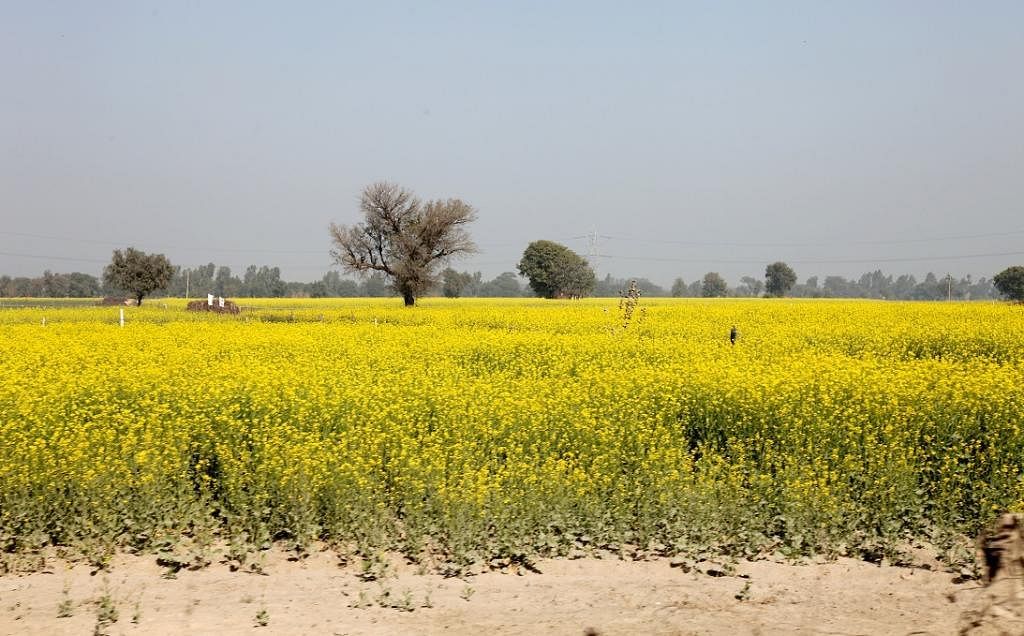
Why in news?
A two-judge Bench of the Supreme Court delivered a split verdict on Tuesday, July 23, regarding the “environmental release” of Genetically Modified (GM) mustard.
Development and Approval Process:
- On September 15, 2015, the Centre for Genetic Manipulation of Crop Plants (CGMCP) at Delhi University sought approval from the Genetic Engineering Appraisal Committee (GEAC) for the environmental release of GM mustard DMH-11.
- Biosafety Dossier:
- The CGMCP submitted a biosafety dossier to the GEAC, which created a sub-committee to examine its contents. After revisions, the sub-committee submitted its report, inviting comments in September 2016.
- GEAC Recommendations:
- On May 11, 2017, the GEAC recommended the environmental release of GM mustard, allowing field tests to assess the crop’s effects. However, the Ministry of Environment sent the proposal back for re-examination in March 2018 after receiving several representations.
- Deferred Tests:
- The GEAC directed the CGMCP to examine the effects of GM mustard on honey bees and soil microbial diversity, but these tests were deferred through 2020-21.
What is the case before the Supreme Court?
- Background of the Case:
- The case arose from challenges by environmentalist Aruna Rodrigues and the organization Gene Campaign against the GEAC’s approval for the environmental release of GM mustard, arguing that the decision violated the precautionary principle and lacked proper scientific scrutiny.
- Split Verdict:
- The Supreme Court delivered a split verdict regarding the approval for the environmental release of genetically modified (GM) mustard, specifically the hybrid DMH-11.
- Unanimous Directives:
- Despite the split decision, both judges agreed on the need for the Union government to formulate a national policy regarding GM crops. This policy should involve consultations with various stakeholders, including experts, farmers, and state governments.
- Case referred to larger bench:
- The case will be referred to a larger bench for further adjudication due to the differing opinions. The Supreme Court directed that the Ministry of Environment, Forest, and Climate Change (MoEF&CC) should conduct a national consultation within four months to develop this policy.
- Concerns Raised:
- Justice Nagarathna pointed out that the GEAC did not consider the long-term effects of GM mustard on health and the environment, while Justice Karol noted the importance of conducting field trials under strict safeguards to monitor the crop’s impact.
Conclusion:
- The Union government should formulate a detailed and inclusive national policy on genetically modified crops. This policy should be based on extensive consultations with experts, farmer representatives, state governments, and other stakeholders to ensure a balanced approach that considers scientific, environmental, and public health perspectives.
Mains PYQ:
- What are the present challenges before crop diversification? How do emerging technologies provide an opportunity for crop diversification? (2021)
GS-III/Science and Technology
ICMR develops CRISPR Cas-based TB Detection Kit
Source: The Hindu
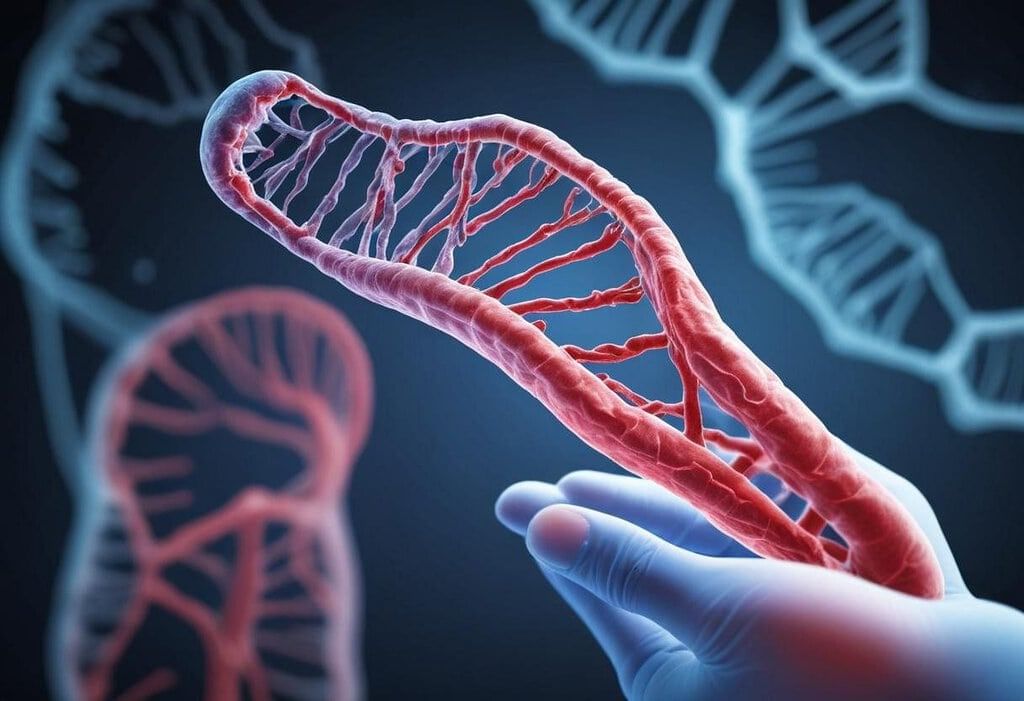
Why in news?
The Indian Council of Medical Research (ICMR) Regional Medical Research Centre for North East has developed the "world's cheapest CRISPR Cas-based TB testing system".
Back2Basics: CRISPR-Cas9 Technology
CRISPR-Cas9 stands for Clustered Regularly Interspaced Short Palindromic Repeats and CRISPR-associated protein 9. It is a technology that allows geneticists and researchers to edit parts of the genome by altering sections of the DNA sequence.
- This technology was recognized with the 2020 Nobel Prize in chemistry for Emmanuelle Charpentier and Jennifer Doudna.
- The system comprises two key components:
- Cas9: This enzyme acts like molecular scissors, cutting the DNA strand at specific locations for genetic editing.
- Guide RNA (gRNA): Designed to find and bind to specific DNA sequences, guiding the Cas9 enzyme to the desired spot in the genome.
- Mechanism:
- Design a gRNA matching the DNA sequence needing an edit.
- Inside the cell, Cas9 and gRNA form a complex that binds to the target DNA sequence.
- Cas9 cuts the DNA at the location.
- The cell's repair mechanisms can then make changes to the DNA.
- Applications:
- Gene editing for genetic disorders, cancer therapies, infectious disease diagnostics, and personalized medicine.
About the New TB Detection System
The system detects TB bacteria using DNA from a patient's saliva at a low cost. It identifies specific DNA sequences unique to Mycobacterium tuberculosis.
- It can identify bacteria in early stages and test over 1,500 samples simultaneously within two hours.
- The technology is simple enough for use in primary health centers in villages.
TB Situation in India
TB kills an estimated 480,000 Indians annually, with over 1,400 patients affected daily. India has millions of 'missing' TB cases annually, undiagnosed or inadequately treated in the private sector.
National Goals for Elimination of TB
- Pradhan Mantri TB Mukt Bharat Abhiyan (2022): Aimed at ending the TB epidemic by 2025, five years ahead of the SDG goal for 2030.
- Nikshay Poshan Yojana (2018): Provides nutritional support to TB patients through a direct benefit transfer scheme.
GS-III/Enviro & Biodiversity
Typhoon Gaemi
Source: Wion

Why in news?
After making landfall in the Philippines, Typhoon Gaemi is heading towards Taiwan.
What is a Typhoon?
A typhoon is a mature tropical cyclone that forms in the Northwest Pacific Ocean, primarily between 100°E and 180°E. It is characterized by strong winds, heavy rain, and can cause significant damage due to high wind speeds, storm surges, and flooding.
Factors causing its formation:
- It needs sustained ocean temperatures of 26.5°C or higher.
- High moisture content in the mid-troposphere.
- Presence of the Coriolis force to initiate rotation.
- Minimal vertical wind shear to allow for storm growth.
- Atmospheric instability to promote rising motion and thunderstorm activity.
- An initial low-pressure area or tropical wave to trigger development.
Formation Regions:
- Northwest Pacific Ocean in areas east of the Philippines, southeast of Japan, and near Taiwan; South China Sea and in Western North Pacific near the Mariana Islands and Guam.
Note: Typhoons do not form in the South Atlantic Ocean and the southeastern Pacific Ocean because of cooler sea surface temperatures and higher wind shear in those regions.
GS-I/Indian Society
A Budget that places health on the margins
Source: The Hindu

Why in news?
With the worst of the COVID-19 pandemic behind us (though the World Health Organization warns the virus still lingers), the Union Budget shifted focus to economic growth levers like infrastructure and employment. It was also hoped that recognizing population health as crucial for economic growth would lead to continued investment in strengthening health systems.
Budget Estimate
refers to the initial allocation of funds designated for various programs, departments, projects within a fiscal year. It represents the government’s expectations regarding how much money will be required to meet planned expenditures. In contrast, revised estimates come into play later. After assessing the actual expenditures needs after the first six months, the government may adjust the initial budget estimates based on how much of the allocated funds have been utilized and what additional resources may be necessary.
Comparisons with Previous Years
Budgetary Estimates:
The comparison of the Budget Estimates (BE) for health between 2023-24 and 2025-25 reveals minimal increases:
- Overall Health Ministry Budget: 1.98% increase
- National Health Mission (NHM): 1.16% increase
- PMJAY: 1.4% increase
Overall Health Ministry budget:
The present allocation made in the current Budget is deemed to be inadequate for expanding health coverage services and enhancing the impact of flagship health programs, particularly in light of rising non-communicable diseases and the goal of universal health coverage by 2030.
Misleading Comparisons:
When we compare the Budget estimates with the previous Revised estimates (RE) the budgetary increase of nearly 12% is misleading, as the RE reflects actual spending rather than the program’s needs.
Missed Opportunities
- Health Workforce Development: While the budget mentioned an increase in new medical colleges, it failed to address the critical need for a multi-layered, multi-skilled health workforce.
- Drug Pricing Mechanisms: Although customs duties were waived on three anti-cancer drugs. However, the budget missed the chance to implement price controls pooled procurement strategies that could have lowered drug costs across both public and private healthcare sectors. Establishing such mechanisms could enhance the affordability and accessibility of essential medications.
- Climate-Resilient Agriculture: While the budget committed to climate-resilient agriculture, which is crucial for food security, it did not sufficiently link these efforts to health outcomes, such as nutrition and public health, which are critical in the context of rising health challenges.
- Limited Coverage of Middle Class: PMJAY primarily targets the bottom 40% of the population based on economic status, leaving the middle class without coverage.
- Focus on Secondary and Tertiary Care: The program emphasizes secondary and tertiary healthcare, often neglecting primary care services. This approach limits comprehensive health coverage and fails to address preventive healthcare needs, which are crucial for achieving UHC.
- Awareness and Accessibility Issues: There is a significant disparity in awareness and accessibility of PMJAY across states. For example, awareness is notably higher in Tamil Nadu (80%) compared to Bihar (20%).
Way forward:
- Targeted Funding for Flagship Programs: Need to allocate a more substantial increase in the budget for the National Health Mission (NHM) and Pradhan Mantri Jan Arogya Yojana (PMJAY) to the eradication of non-communicable diseases, tuberculosis elimination by 2025.
- Strengthen Primary Healthcare: Government should ensure adequate funding for primary healthcare services, which form the foundation for preventive and community health initiatives.
Mains PYQ:
The public health system has limitations in providing universal health coverage. Do you think that the private sector can help in bridging the gap? What other viable alternatives do you suggest? (2015)
GS2/International Relations
Govt proposes self-declaration with regard to proof of origin under Customs law
Source: The Hindu
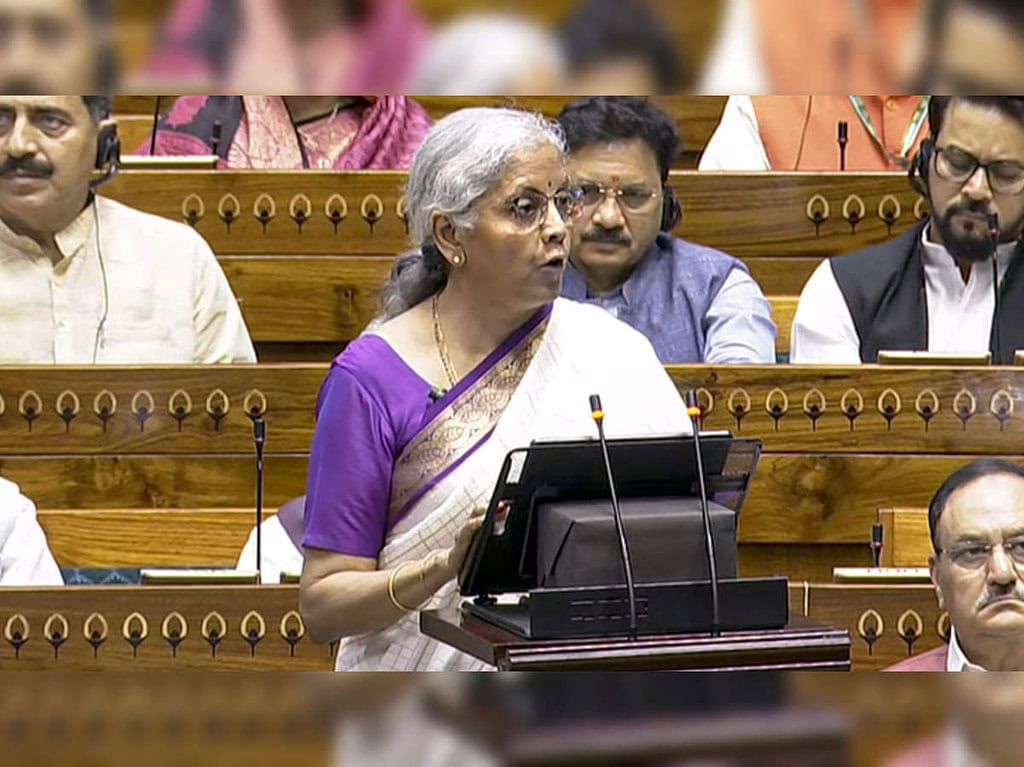 Why in news?
Why in news?
The Union Budget 2024 has introduced amendments to the Customs Act, easing compliance with value-addition norms that are usually in place to prevent the misuse of concessions agreed upon in a trade agreement.
About
- Rules of origin are the criteria used to define where a product was made. They determine the economic nationality of a product in international trade.
Criteria for Determining Origin
- Wholly Obtained or Produced: Goods that are completely produced or obtained in a country, such as agricultural products, minerals, and fish.
- Substantial Transformation: Products that have undergone substantial transformation in a country, typically defined by a change in tariff classification, a specific percentage of value added, or specific manufacturing processes.
Benefits of Rules of Origin
- Prevention of Trade Deflection: It prevents trade deflection, where goods are routed through countries with the lowest tariffs to take advantage of preferential trade agreements.
- Encouragement of Local Manufacturing: By setting specific criteria for substantial transformation, these rules encourage countries to develop local industries and add value within their borders.
- Trade Preferences and Economic Integration: They allow countries to grant trade preferences to their partners in FTAs, facilitating economic integration and boosting intra-regional trade.
- Fair Trade Practices: Rules of origin ensure that only eligible products benefit from trade preferences, maintaining fair competition.
- Customs and Trade Statistics: Accurate determination of origin helps in maintaining proper customs records and compiling trade statistics, which are vital for economic analysis and policy-making.
- Protection of Domestic Industries: By defining which products qualify for preferential treatment, rules of origin can protect domestic industries from unfair competition from imported goods that do not meet the origin criteria.
Amendment in Section 28DA of the Customs Act, 1962
- The Indian government has amended Section 28DA of the Customs Act, 1962.
- Through this, it has replaced the requirement for a "certificate" of origin with a broader "proof" of origin, which can be a certificate or a self-declaration in accordance with a trade agreement.
- This change aligns with global customs practices and may be implemented if agreed upon in future trade agreements.
Impact
- Tax experts note that this amendment allows for greater flexibility in determining the origin of goods.
- However, concerns are raised about Potential breaches in self-certification and the need for high integrity in the exporting countries to prevent loss of customs revenue for India.
- While developed countries have robust tracking systems and use self-certification in FTAs, India remains cautious due to past experiences with goods being diverted from countries like China via Indonesia and Vietnam.
- The amendment could impact future free trade agreements (FTAs), such as the one with the European Free Trade Association (EFTA), which includes provisions for self-certification.
Breaches in rule of origin
- The amendments to the Customs Act allow Indian trade negotiators to choose which foreign exporters can self-certify the origin of goods, but India has faced several breaches in rules of origin.
- A report by the Global Trade Research Initiative (GTRI) highlighted a suspicious 60-fold increase in silver imports from the UAE, a country that doesn't produce silver, indicating a possible breach of the rules of origin in the India-UAE FTA.
- Strict rules of origin verification norms to address issues related to breaches
- In response to the breaches, mentioned above, India implemented strict rules of origin verification norms, known as CAROTAR, in 2020.
- The CAROTAR provides the minimum basic information that the importer needs to know before importing goods.
- These rules help the importer to ascertain the country of origin, assist Customs Authorities in the smooth clearance of import of goods under FTAs and claim concessional duty.
- This move led to concerns from several Southeast Asian countries during the India-ASEAN FTA review.
What needs to be done?
- Despite these strict measures, India's trade deficit with ASEAN countries increased to $43.57 billion in FY23, up more than 40% from $25.75 billion in FY22.
- Trade experts have noted that circumventing rules of origin is a recurring issue and that enforcing these rules requires robust customs administration.
- They also highlighted the challenge of balancing ease of doing business with trade regulation.
GS3/Economy
An Outlining of Urban Transformation Strategies
Source: The Hindu

Why in news?
Urbanisation in India has been a defining trend of the 21st century, with cities becoming the epicentres of economic and social development. Home to approximately 500 million people, which accounts for about 36% of India's population, urban areas are witnessing a steady population growth rate of 2% to 2.5% annually.
Strategies Outlined in the Budget to Address the City Development
- Proposal to Expand the PMAY Scheme in Urban Areas: Since its implementation in 2015, the Pradhan Mantri Awas Yojana (Urban) has made significant strides. The Budget proposes to boost this scheme by supporting the construction of an additional 10 million housing units in urban areas.
- Housing Plans for Migrant Workers in Cities: For the migrant population working in industries, the Budget addresses the acute need for adequate housing through the introduction of new rental housing with dormitory-type accommodations for industrial workers.
- Development and Upgradation of Core Infrastructure Requirements: Urban infrastructure, encompassing water supply, sanitation, roads, and sewerage systems, is fundamental to city development. Atal Mission for Rejuvenation and Urban Transformation (AMRUT) has allocated ₹8,000 crore for these purposes.
- Some Other Key Announcements Related to Smart Cities, Planned City Development: Launched in 2015, the Smart Cities Mission received ₹8,000 crore in budgetary support in 2023-24. However, a new initiative, the National Urban Digital Mission (NUDM), has been introduced...
- Purpose of Newly Launched National Urban Digital Mission (NUDM)
- Digitisation of Property and Tax Records: The NUDM aims to digitise property records and tax management systems, ensuring transparency, accuracy, and efficiency...
- Geographic Information System (GIS) Mapping: Integrating GIS mapping into urban planning and management allows for a more precise understanding of spatial data...
- Financial Management: Improved financial management through digital tools enables urban local bodies to streamline their budgeting, expenditure tracking, and revenue generation...
- Challenges and Future Prospects
- Funding and Resource Allocation: Adequate funding and resource allocation are critical to the success of these initiatives...
- Capacity Building: Building the capacity of urban local bodies to implement and manage digital solutions is vital...
- Interoperability and Integration: Ensuring that various digital systems and platforms are interoperable and integrated seamlessly is crucial for effective urban management.
- Data Privacy and Security: As cities collect and process vast amounts of data, safeguarding privacy and ensuring data security are paramount.
Conclusion
The Budget presents a comprehensive approach to urban development, combining financial provisions and procedural strategies to promote planned urbanisation...
GS2/Polity
Right to Shelter is a Fundamental Right: Supreme Court
Source: The Hindu
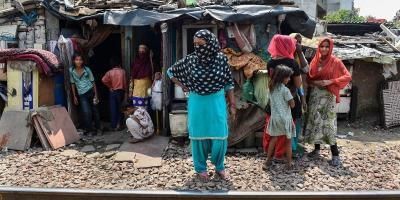
Why in news?
The Supreme Court emphasized the need to balance railway infrastructure development in Haldwani, Uttarakhand, with the fundamental right to shelter for nearly 50,000 people accused of illegally encroaching on railway land.
What was the Case?
- The hearing was based on an application filed by the Railways seeking to modify a January 2023 Supreme Court order.
- The order had stayed a Uttarakhand HC direction to evict the families within a week, even using paramilitary forces.
- The application pointed out that the Ghaula River flood has disrupted railway operations in the region and that more land was urgently needed to lay new tracks.
What is the Right to Shelter?
- The right to shelter is derived from the Right to Life under Article 21 of the Constitution of India, which guarantees the protection of life and personal liberty.
- It provides the Right to reside and settle in any part of the territory.
Judicial pronouncements related to it:
- Olga Tellis v. Bombay Municipal Corporation (1985): The Supreme Court recognized the right to livelihood as a part of the right to life under Article 21. It ruled that the right to life includes the right to livelihood and shelter.
- Chameli Singh v. State of Uttar Pradesh (1996): The Supreme Court declared that the right to shelter is a fundamental right under Article 21. It includes adequate living space, safe and decent structures, clean surroundings, light, air, water, electricity, and sanitation.
- Ahmedabad Municipal Corporation v. Nawab Khan Gulab Khan (1997): The Supreme Court directed the state to construct affordable houses for the poor, reiterating the state's duty to provide shelter and make the right to life meaningful.
Various Legislations supporting the Right to Shelter:
- The Scheduled Tribes and Other Traditional Forest Dwellers (Recognition of Forest Rights) Act, 2006
- The Right to Fair Compensation and Transparency in Land Acquisition, Rehabilitation and Resettlement Act, 2013
- The Slum Areas (Improvement and Clearance) Act, 1956
GS-II/Polity
Is immunity for the President and Governors absolute?
Source: The Hindu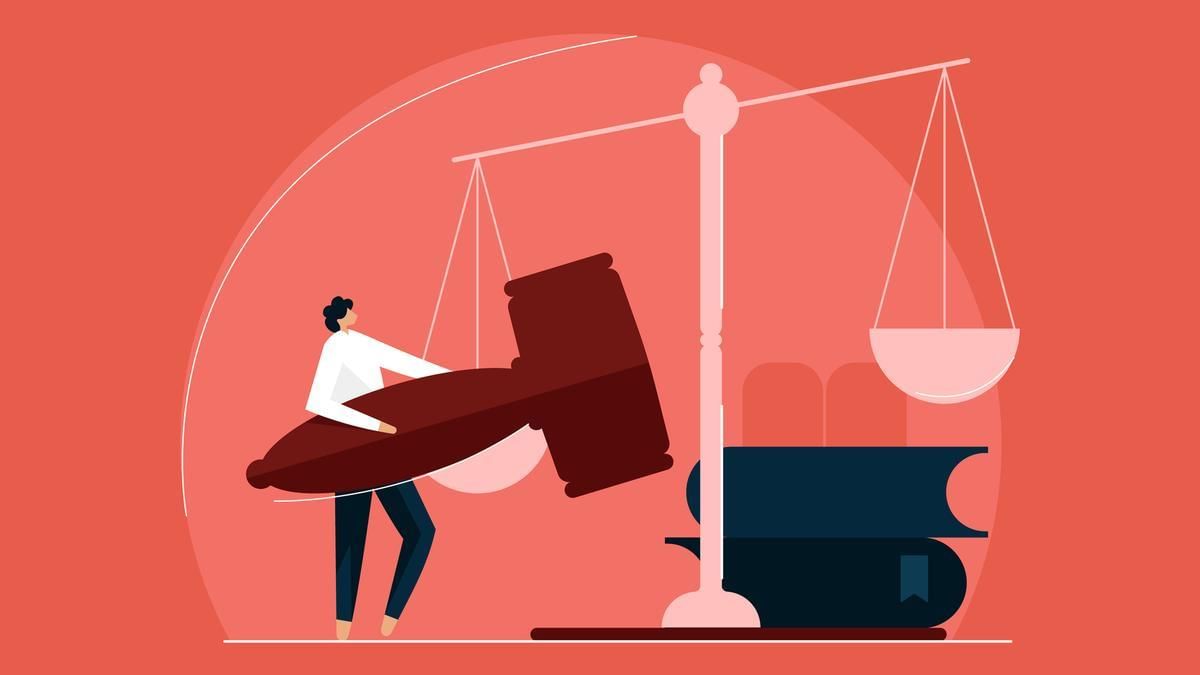
Why in news?
The Supreme Court has agreed to examine if the immunity granted to the President and Governors under Article 361 violates fundamental rights and constitutional principles.
What is the case?
The Supreme Court is examining a petition filed by a contractual woman employee of the West Bengal Raj Bhavan, who has accused Governor C.V. Ananda Bose of sexual harassment and molestation. The petitioner argues that the “absolute immunity” granted to the Governor under Article 361 of the Constitution undermines her fundamental rights and the fairness of the legal process.
Immunity Under Article 361:
- Provides immunity to the President and Governors from being answerable to any court for acts performed in their official capacity.
- Clause (2) of Article 361 states that no criminal proceedings can be initiated or continued against the President or a Governor during their term of office. The petitioner contends that this immunity should not apply to illegal acts that violate fundamental rights.
- The petitioner argues that the Governor’s immunity caused negligent handling of her complaint by police, delaying justice and hindering investigations.
- Supreme Court will determine if Article 361(2) immunity is absolute or can be challenged in serious cases like sexual harassment.
Does Article 361 Grant Absolution to the Governor against Criminal Charges?
- Scope of Article 361: Article 361 does grant significant immunity to Governors, shielding them from criminal proceedings during their term. However, the immunity is not absolute.
- The first provision allows for the conduct of the President to be reviewed by designated bodies for impeachment, while the second provision allows for civil suits against the government.
Judicial Precedents:
- Previous court rulings have indicated that while Governors enjoy immunity under Article 361, this does not prevent judicial scrutiny of their actions, especially if those actions infringe upon fundamental rights.
- For example, in the case of Rameshwar Prasad vs. Union of India, the Supreme Court stated that civil immunity does not preclude challenges based on malafide actions.
Potential for Legal Challenge:
- The current case may set a precedent for how Article 361 is interpreted regarding criminal acts committed by Governors.
- If the court finds that immunity does not apply to acts that, it could pave the way for accountability and legal recourse for victims of misconduct by constitutional authorities.
Conclusion:
- The Supreme Court’s interpretation of Article 361 could redefine the immunity of Governors, potentially allowing criminal proceedings for actions violating fundamental rights, thereby ensuring accountability and justice for victims.
Mains PYQ:
Discuss the essential conditions for the exercise of the legislative powers by the Governor. Discuss the legality of the re-promulgation of ordinances by the Governor without placing them before the Legislature. (UPSC IAS/2022)
|
49 videos|5376 docs|1137 tests
|
FAQs on UPSC Daily Current Affairs: 25 July 2024 - Current Affairs & Hindu Analysis: Daily, Weekly & Monthly
| 1. What is the significance of the removal of Indexation Benefit on Sale of Property in the Indian economy? |  |
| 2. Why did the Supreme Court struggle to reach a consensus on the environmental release of GM mustard? |  |
| 3. How does the ICMR-developed CRISPR Cas-based TB Detection Kit work? |  |
| 4. What are the key points of the Budget that place health on the margins? |  |
| 5. What are the implications of the Supreme Court declaring the Right to Shelter as a Fundamental Right? |  |
















